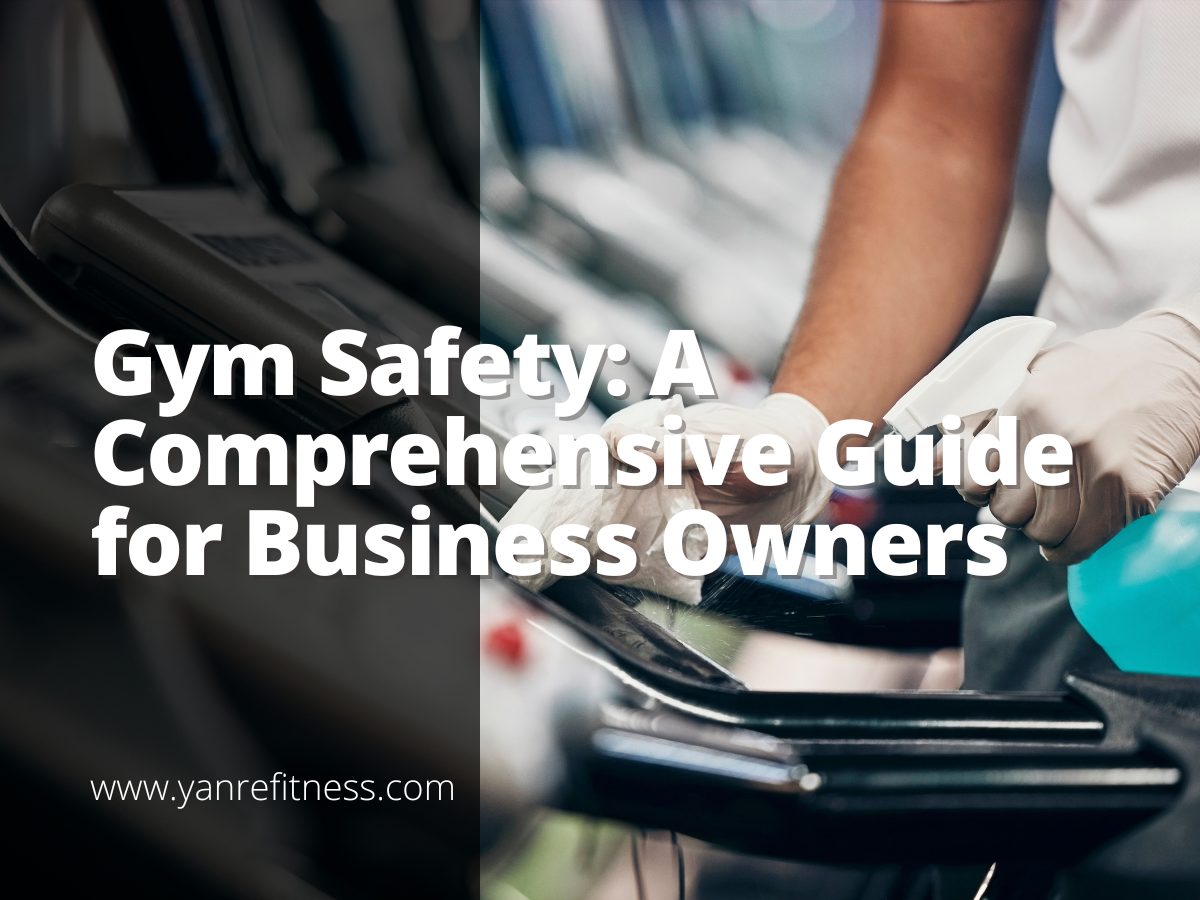Is gym safety the key priority for your fitness business? The importance of a safe, healthy workout environment is often overlooked, yet it is a vital aspect of gym ownership that demands the utmost attention. But gym safety is not just about preventing injuries.
Gym safety fosters trust, ensures legal compliance, contributes to member retention, and builds a positive business reputation. To effectively manage gym safety, a thorough approach is required – worry not! This comprehensive guide will help you understand the finer details of gym safety, including gym safety rules and regulations.
Let’s dive into the topic of safety in the gym!
Table of Contents
1. Facility and Equipment Safety
A safe gym environment is paramount for ensuring member satisfaction and trust. Moreover, facility and equipment safety plays a crucial role in minimizing accidents and injuries. See the following below:
Equipment Maintenance and Inspection
Keeping gym equipment in optimal condition is essential for a safe training environment. Regular maintenance and inspection help in identifying and fixing any issues before they become hazardous. Yanre Fitness offers gym equipment that is designed for durability, making maintenance easier. As a gym safety expert, I can not stress enough how crucial timely maintenance is. Here are some to take note of:
- Schedule Preventive Maintenance
Preventive maintenance is vital for spotting potential issues before they escalate. Craft maintenance schedules for each piece of equipment in the gym and ensure that the team conducts regular check-ups, keeping records for management to review.
- Active Equipment Repair
Regardless of how impeccable the maintenance is, equipment will eventually require repairs. Be proactive in repairing gym equipment, as this is generally more cost-effective than replacing the entire unit. A timely repair can also prevent accidents and keep the clients satisfied.
- Tracking Software
Record-keeping is a critical aspect of gym equipment maintenance. Utilize maintenance software to keep track of the maintenance schedules, especially if your gym has multiple pieces of the same equipment. This software can help conveniently track all gym equipment maintenance tasks in one location, ensuring nothing gets overlooked and helping to remain compliant with manufacturer’s warranties.
- Equipment Replacement Strategy
Eventually, equipment might become so worn out or damaged that repairs are no longer feasible. Have a strategy in place for when to replace equipment. This may be when newer models with better features are available, or when the repair costs outweigh the benefits of keeping the old equipment.
- Cleaning Protocols
Cleaning gym equipment should be the first line of defense against wear and tear. Encourage staff to follow the manufacturer’s guidelines on cleaning practices, as each piece of equipment may require specific care. Develop standardized cleaning checklists to ensure that all equipment is consistently cleaned properly. Regular cleaning is not only hygienic but also prevents dirt and debris from damaging parts.
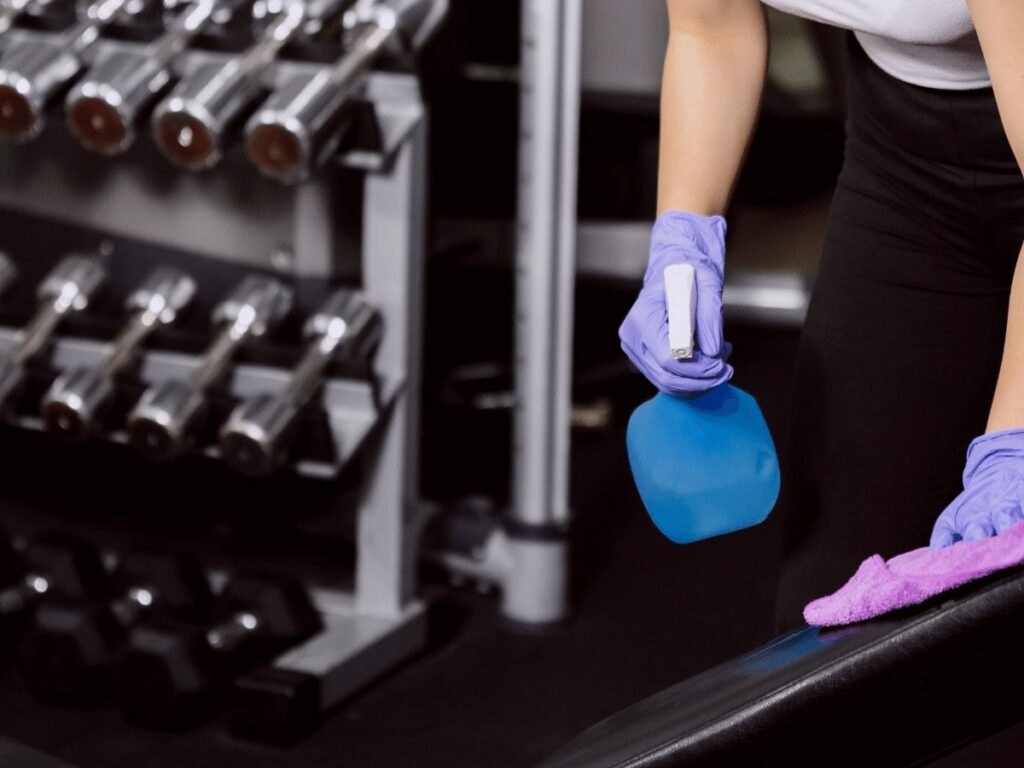
Placement and Organization
The layout of the gym should facilitate easy movement and prevent congestion, especially around heavy equipment. Proper placement ensures that there is enough space for members to exercise without any interference. A clutter-free gym speaks volumes about professionalism. Remember, a well-organized gym is a safer gym.
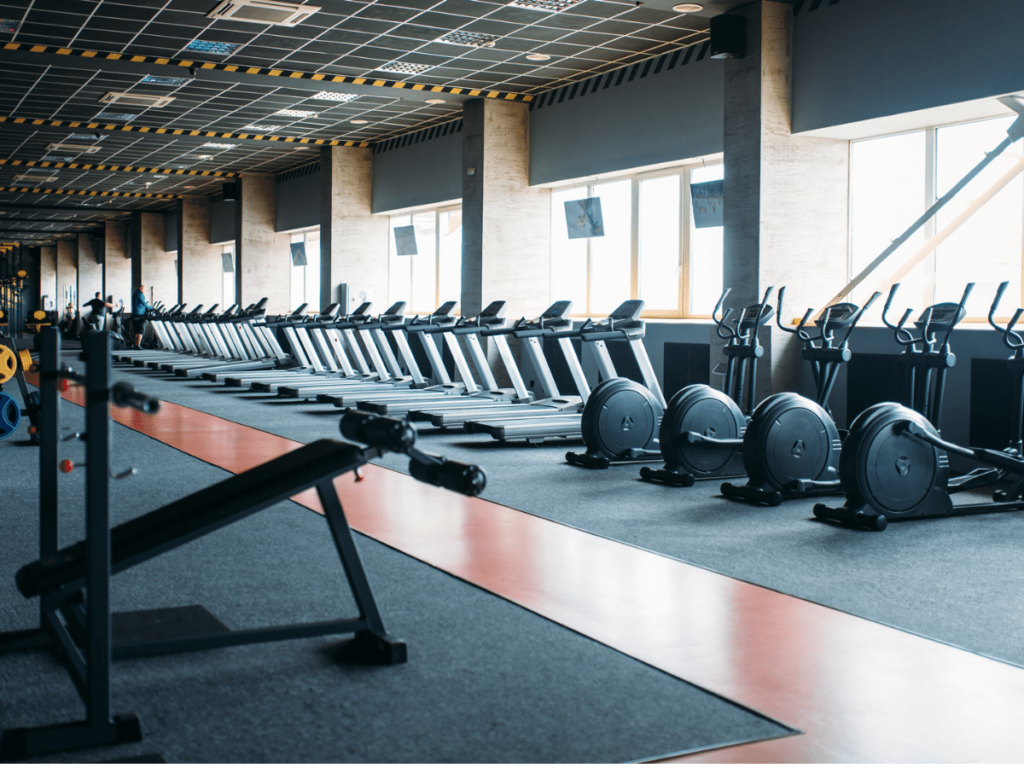
Ventilation and Temperature Control
Ensuring that the facility has adequate ventilation is essential for the comfort and safety of the members. Proper air circulation helps in reducing fatigue and keeps the air fresh. Temperature control, on the other hand, is vital, especially for high-intensity workouts where the body’s heat production is elevated. Pro tip: Keep thermostats set between 68-72 degrees Fahrenheit for optimal comfort.
Flooring and Mat Safety
Flooring in a gym should be sturdy, non-slip, and should be able to withstand heavy impact. This is crucial for preventing slips and injuries. I’ve seen too many near-misses due to improper flooring. An example of safety flooring is the use of thick rubber mats under weightlifting areas to absorb shocks. This not only protects the floor but also reduces noise. Always double-check that mats are clean and free from any tears or rips.
The following table provides recommendations for ensuring facility and equipment safety, including flooring and mat safety, equipment maintenance, fire safety measures, first aid provisions, and security protocols.
| Safety Category | Recommendation |
| Flooring | 1. Use sturdy, non-slip flooring that can withstand heavy impact. 2. Install thick rubber mats under weightlifting areas for shock absorption. 3. Regularly inspect mats for cleanliness, tears, or rips. |
| Equipment Safety | 1. Conduct regular maintenance and inspections of all equipment. 2. Provide clear instructions and warnings for equipment usage. 3. Train staff and users on proper handling and operation of equipment. 4. Ensure equipment is properly installed and secured. 5. Implement safety features such as emergency stop buttons. 6. Regularly clean and sanitize equipment to prevent infections. |
| Fire Safety | 1. Install and maintain fire extinguishers at accessible locations. 2. Have clear evacuation routes and emergency exit signs. 3. Regularly test and maintain fire alarms and smoke detectors. 4. Conduct fire drills and train staff on fire safety protocols. 5. Store flammable materials in designated and secure areas. 6. Ensure electrical systems are up to code to prevent electrical fires. |
| First Aid | 1. Have well-stocked and easily accessible first aid kits. 2. Train staff on first aid procedures and CPR. 3. Display emergency contact numbers prominently. 4. Ensure staff is trained in handling medical emergencies. 5. Regularly check and replenish first aid supplies. |
| Security | 1. Install surveillance cameras in key areas of the facility. 2. Have secure access control systems for restricted areas. 3. Implement proper lighting in parking lots and outdoor areas. 4. Train staff on security protocols and emergency response. 5. Have an emergency communication system in place. 6. Conduct regular security audits and assessments. |
2. Hygiene and Sanitation
Gym hygiene is an essential aspect of facility management. Cleanliness and sanitation practices ensure a healthy environment which is crucial in the current health-conscious world. Let’s dive in to know more.
Gym Facilities and Equipment
Keeping the gym clean is not only aesthetically pleasing but also essential for the health of the members. Regular cleaning of the equipment, locker rooms, and common areas is crucial. I always say a clean gym is a happy gym. For instance, using disinfectant sprays and wipes for cleaning equipment after use can prevent the spread of germs. Make it a habit to encourage members to wipe down equipment after use.
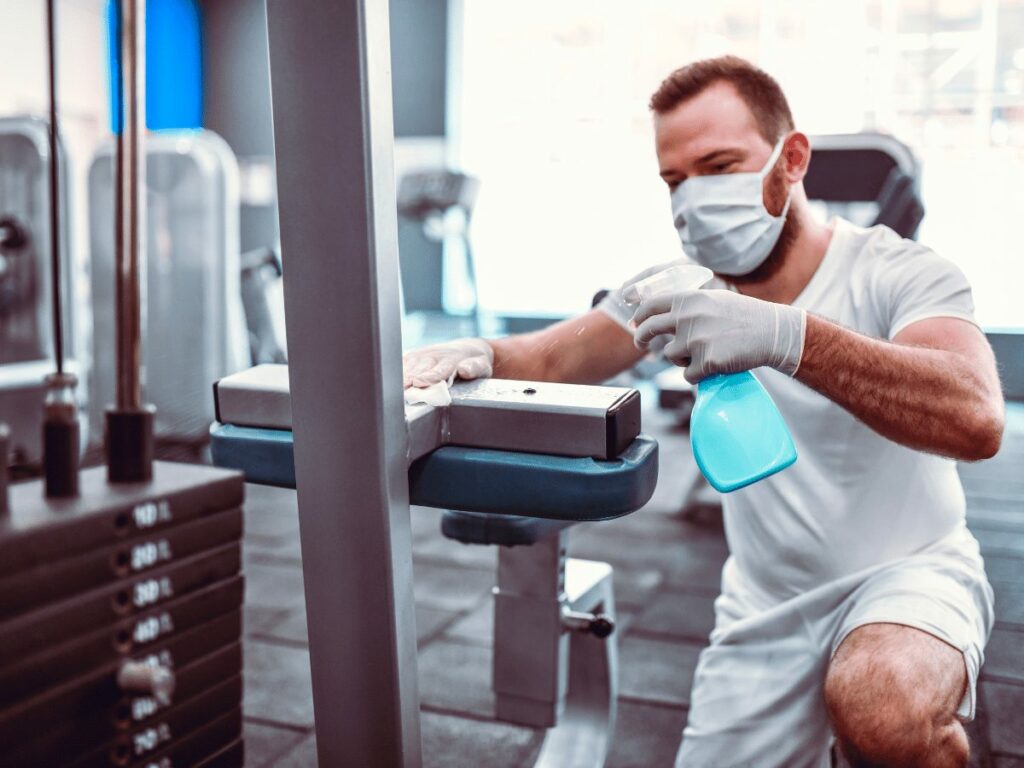
Proper Sanitization Practices
Sanitization goes beyond regular cleaning by ensuring that germs and bacteria are effectively killed. This is especially important in high-touch areas like door handles and equipment controls. Installing UV-C lights for overnight sanitization can be a highly effective way to ensure a germ-free environment. Honestly, this small investment can save a lot in the long run. It’s not just about appearances, it’s about genuine cleanliness.
Hand Sanitizers and Wipes
Easy access to hand sanitizers and wipes is critical for maintaining hygiene in the gym. Placing dispensers at various locations ensures that members can easily clean their hands or wipe down equipment.Convenience is key. Forexample, a gym that places sanitizer dispensers near the entrance and exit as well as throughout the workout area shows commitment to member health.
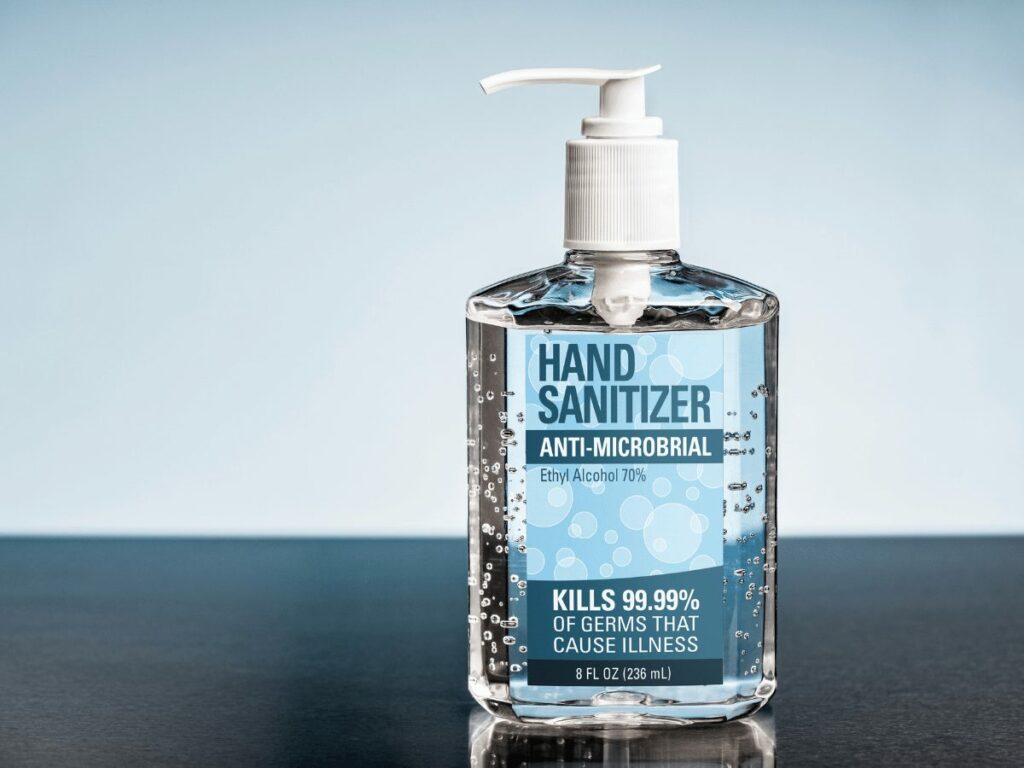
Personal Hygiene
Members must also understand the importance of maintaining personal hygiene. This includes wiping sweat, using clean workout attire, and not attending the gym when sick. I’ve personally witnessed how a single individual can impact the gym’s atmosphere. Educating members through signage and communication is vital. Posting signs that remind members to wash their hands can significantly contribute to a healthier gym.
3. Member Education and Awareness
Educating members is a cornerstone of gym safety and the efficient use of facilities. It empowers them to make informed decisions regarding their fitness journey. Here are some to take note of:
Orientation Sessions
Orientation sessions provide new members with vital information about the gym and its facilities. This initial introduction helps in familiarizing them with the environment and the equipment. Speaking from experience, a thorough orientation creates a strong first impression. Including equipment demonstrations in orientation sessions ensures new members are well acquainted with how to use it safely.

Equipment Use
Providing clear instructions on how to use equipment is necessary for preventing misuse that can lead to injuries. This can be done through signage, tutorials, or demonstrations by trainers. It’s astonishing how often people use equipment incorrectly. Having QR codes on machines that link to instructional videos on proper usage. Keep it tech-savvy and easily accessible.
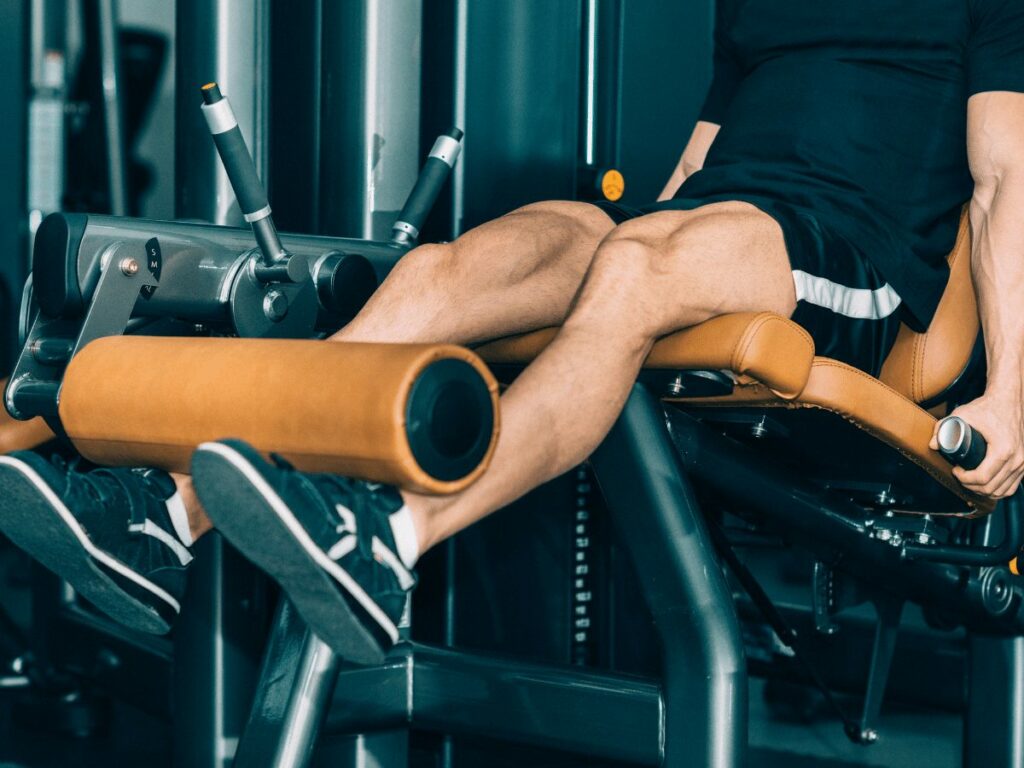
Proper Form and Technique
Ensuring that members are aware of the importance of proper form and technique is key to preventing injuries and maximizing workout benefits. As an expert, I assure you, form is everything! Providing workshops or training sessions on the proper form can be beneficial. A monthly session focusing on the correct form for squats or deadlifts can significantly reduce the risk of back injuries. Education is the best tool here.
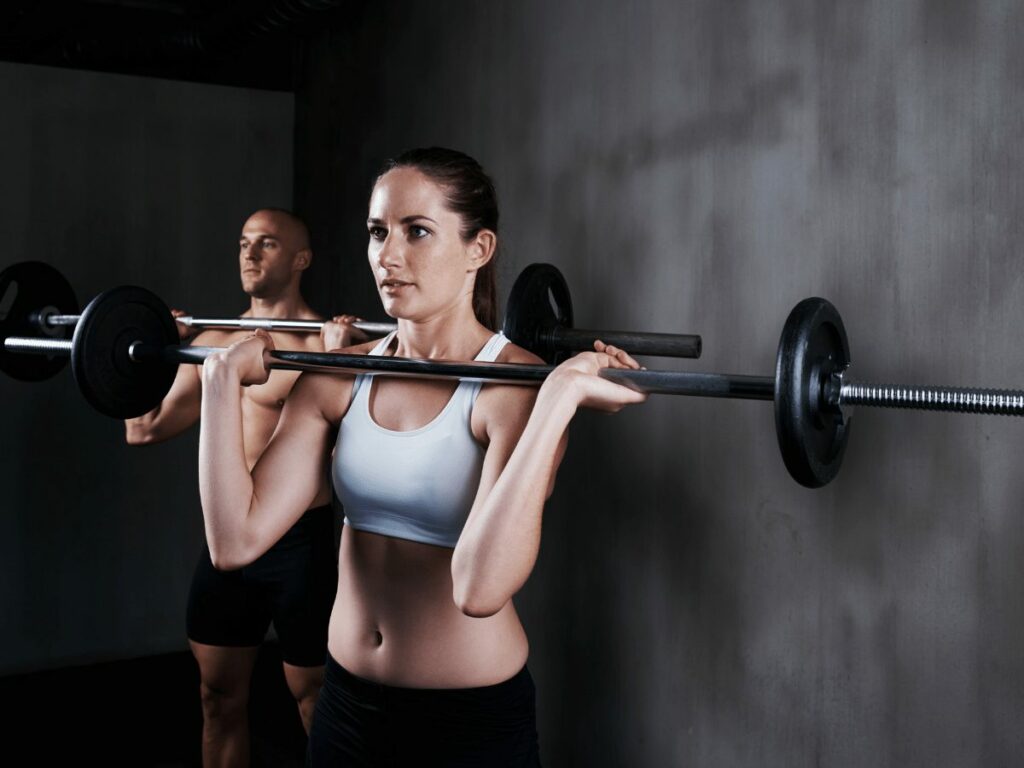
Potential Risks and Precautions
It’s important to inform members about the potential risks associated with different workouts and the necessary precautions to take. This can include advice on when to avoid certain exercises and alternative options. Safety first, always!A great practice is to have a safety week where members are educated through seminars on topics like exercise risks and the importance of listening to their bodies.
4. Injury Prevention
Injury prevention goes hand-in-hand with safety and education. Implementing practices that reduce the risk of injury is essential for member retention and satisfaction. Refer to data below:
Warm-Up and Stretching
Encouraging members to engage in warm-up and stretching routines before working out can significantly reduce the risk of injuries. Let’s be honest, nobody wants to get hurt. Having a trainer lead a group warm-up session at peak times. This not only encourages participation but also ensures that members are correctly warming up. Lead by example, and they’ll follow.

Proper Rest and Recovery
Educating members on the importance of rest and recovery in preventing injuries and aiding muscle growth is crucial. Overtraining is a real issue, don’t ignore it. Having a recovery zone in the gym with foam rollers and massage tools is excellent for promoting this aspect. This zone can serve as a reminder to members that recovery is an integral part of their fitness journey. Remember, muscles grow outside the gym too.
Promoting Gradual Progression
Encouraging members to gradually increase the intensity of their workouts and the weights they lift can prevent overuse injuries. Impatience can lead to setbacks. Trainers can create progressive plans for members that outline a safe increase in intensity over time. Individualized attention makes a difference.
Alternatives and Modifications
Not every exercise is suitable for everyone. Offering alternative exercises and modifications is crucial for catering to different fitness levels and limitations. It’s not one size fits all. Offering different versions of a plank during a class, such as on the knees for beginners or with leg raises for more advanced members. Variety is the spice of life, and the gym is no exception.
5. Emergency Preparedness
Emergencies are unpredictable and can occur at any time. Being prepared to handle these situations effectively is vital for the safety of both members and staff. Here are some to explore:
CPR and First Aid
Ensuring that the gym staff is well-trained in CPR and First Aid is crucial. This knowledge can be life-saving in case of any health emergencies such as cardiac arrests or injuries during workouts. It’s a matter of life and death; never take it lightly. The American Red Cross offers certification programs in CPR and First Aid which are industry standards. When it comes to saving lives, knowledge is power.
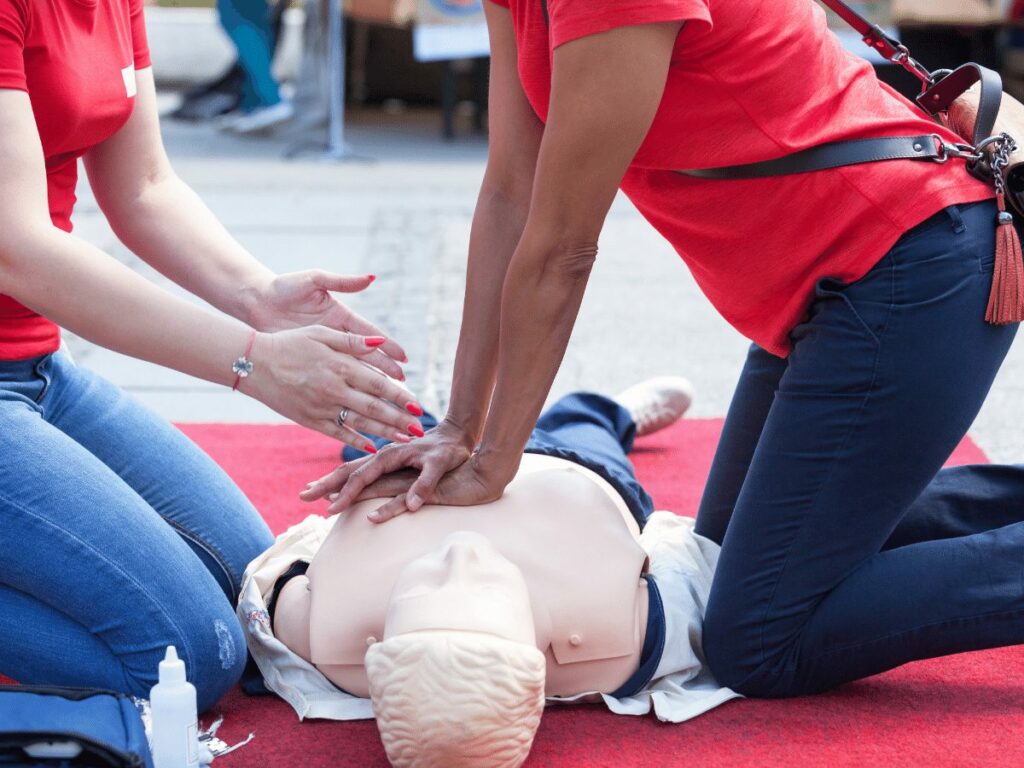
Checking and Maintaining Safety Equipment
The availability of safety equipment is essential, but regularly maintaining and checking them is equally important. This ensures that in case of an emergency, the equipment is in proper working condition. Imagine the horror of a non-working fire extinguisher during a fire. Gyms like Yanre Fitness make it a point to conduct monthly checks on all safety equipment. Being proactive is key here. See below the ff:
- Fire Extinguishers Ensuring the availability of fire extinguishers is crucial for gym safety. They are indispensable in situations where a fire breaks out, allowing staff to contain it quickly before it escalates. Positioning fire extinguishers at strategic points throughout the gym ensures accessibility. Regular inspection and maintenance are essential to ensure that they are always in working condition.
- Automated External Defibrillators (AEDs) Having Automated External Defibrillators on-site is imperative for any gym. Sudden cardiac arrest can happen to anyone, regardless of fitness level. AEDs analyze the heart’s rhythm and, if necessary, deliver an electrical shock to help the heart re-establish an effective rhythm. Quick access to an AED can be the difference between life and death.
- First Aid KitsFirst Aid Kits are essential pieces of safety equipment in any gym. These kits should be stocked with necessary supplies such as bandages, antiseptics, and pain relievers. Accidents like slips, falls, or minor cuts are common in gym settings, and a well-equipped first-aid kit ensures that these can be addressed promptly.
- Slip-Resistant Flooring Gym owners should prioritize installing slip-resistant flooring. With gym-goers often carrying weights and performing high-intensity exercises, the risk of slips and falls is significantly high. Slip-resistant flooring minimizes this risk and ensures a safer workout environment. Regular cleaning and maintenance are also crucial to keep the floors dry and free from any materials that could cause slips.
Emergency Exits and Evacuation Plans
Having clearly marked emergency exits and well-thought-out evacuation plans are critical in the event of an emergency like a fire or earthquake. This ensures a swift and organized evacuation, minimizing panic and confusion. Clarity and speed save lives. There are gyms that incorporate well-lit emergency exit signs and have posted evacuation plans throughout the facility. It’s about creating a safe environment for everyone.
Regular Drills
Conducting regular drills and practice scenarios is imperative for ensuring that both staff and members are aware of the protocols during different emergencies. This reinforces evacuation plans and enables individuals to act promptly and efficiently. I believe a best practice is to conduct different scenarios during drills to cover a variety of emergencies, such as fire drills or earthquake evacuation practices.
Conclusion
Reflecting on the material presented, we have delved into the essential aspects of opening a gym and gym safety that business owners need to prioritize. From gym etiquette to the benefits of a well-rounded fitness routine, the importance of ensuring a safe and healthy environment for customers is evident.
For any queries or are looking for a superior gym and fitness equipment to ensure safety and durability, Yanre Fitness is the go-to gym equipment center. Contact us to address all questions and explore the vast range of high-quality gym equipment tailored to meet the safety requirements of fitness facilities. Act now to foster a secure and thriving fitness environment.
Related articles:

